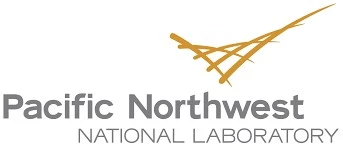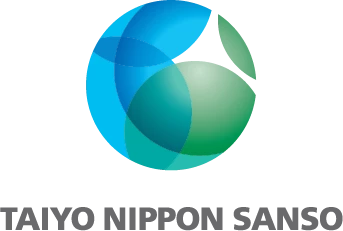Cryo and in-situ electron microscopy diagnosis guided design of rechargeable battery materials for better batteries
This webinar will focus on advanced, in situ environmental transmission electron microscopy and its integration with other peripheral capabilities for probing into the structural and chemical evolution of electrode materials for rechargeable batteries. Our experts will be joined by Dr. Chongmin Wang, Pacific Northwest National Laboratory (PNNL), who will illustrate how the insights gained from these advanced microscopy diagnoses can be used to guide an optimized design and discovery of electrode materials for better batteries.
Attend this webinar to learn how to:
- Capture the frontier of advanced, in situ electron microscopy and its applications for energy storage materials
- Gain insight on approaches that can be used to implant a science question on the available microscopy platform
- Stimulate general thinking on enhancing and developing new microscopy capabilities to solve challenging science questions
Presentation abstract:
We have witnessed tremendous progress on the development of aberration corrected transmission electron microscopy and scanning transmission electron microscopy. As a result of this development, atomic scale imaging and spectroscopy of materials, under high vacuum and static condition, appears to be a routine practice. The questions now come to how we extend the microscopy and spectroscopy methodologies to analyze materials at or near realistic condition, which is broadly termed as in-situ and operando electron microscopy. In a general sense, in-situ and operando electron microscopy enable direct observation of process under dynamic operating condition of a device, representatively such as: real time observation of structural and chemical evolution of rechargeable batteries under battery operating condition; finding the active sites of catalyst; monitoring of mass transport during oxidation and reduction; observing nucleation and growth process in a liquid; visualizing defect generation and interaction during deformation; and capturing the response of materials to external stimuluses. In this presentation, I will focus on recent progress on using ex-situ, in-situ, operando and cryo-scanning transmission electron microscopy for probing into the structural and chemical evolution of electrode materials for lithium ion batteries, representatively such as Li and Si anode. I will highlight several recent key observations, which even appear to be well documented, while essentially are poorly understood, therefore limiting the advances of both cathode and anode for better batteries. It would be expected that this presentation can stimulate new ideas as how to attack the bottlenecks for advancing electrode materials design for better batteries. In perspective, challenges and opportunities for developing in-situ electron microscopy for probing both functional and structural materials will also be discussed.
Presented by Thermo Fisher Scientific
Agents for Sustainable Community Change: Webinar and Workshop Series Part 1: The Intersection of Materials Science & Global Sustainable Development
Join us for this new webinar and workshop series – Agents for Sustainable Community Change – to learn about sustainability, the United Nations Sustainable Development Goals, and how to catalyze diverse community collaborations toward a shared project action plan on sustainability within your local community.
In 2015, the leaders of the 193 United Nations Member States committed to 17 Sustainable Development Goals (SDGs) to help extreme poverty, fight inequality and injustice, and address climate change. As materials scientists, where do we fit in?
Part I of this series, The Intersection of Materials Science & Global Sustainable Development, will provide an overview of the SDGs and lead participants in interactive small-group discussions to identify how materials scientists can contribute to creating a more sustainable future.
Note that this session will be interactive, and will be using Google Jamboard. If you would like to learn a little more about Jamboard before the session, feel free to watch this tutorial video.
This virtual workshop is open to everyone and is offered free of charge by MRS' Focus on Sustainability Subcommittee. Become a change-maker for achieving environmental security, social equity and economic prosperity. Help improve the quality of life and leave a better world for our children.
Don’t miss the other webinars in this series:
Part II: Tools for Developing Sustainable Community Change | Wednesday, March 2, 2022
Part III: Agents for Sustainable Community Change Grant Kick-Off | Wednesday, March 30, 2022
Agents for Sustainable Community Change: Webinar and Workshop Series Part 2: Tools for Developing Sustainable Community Change
Join us for this new webinar and workshop series – Agents for Sustainable Community Change ¬– to learn about sustainability, the United Nations Sustainable Development Goals, and how to catalyze diverse community collaborations toward a shared project action plan on sustainability within your local community.
In Part II of this series, Tools for Developing Sustainable Community Change, participants will be provided with the tools, skills, and resources to design their own sustainability action plan. Workshop presenters and facilitators will share real-life experiences and examples of how they have successfully instituted sustainability-related change within their organizations, and participants will have the opportunity to work together to create their own project frameworks.
This virtual workshop is offered free of charge for everyone by MRS' Focus on Sustainability Subcommittee. Become a change-maker for achieving environmental security, social equity and economic prosperity. Help improve the quality of life and leave a better world for our children.
Don’t miss the other webinars in this series:
Part I: The Intersection of Materials Science & Global Sustainable Development (Feb 16, 2022)
Part 3: Agents for Sustainable Community Change Grant Kick-Off (March 30, 2022)
Visualizing Li Metal Anode Battery Degradation
Li-metal anodes can provide a significant improvement in energy storage capacity, though degradation of the Li-metal electrode during cycling in volatile liquid electrolytes prevents stability and longevity. Hear from Dr. Katherine Jungjohann about how her team has used cryogenic electron microscopy to understand these degradation mechanisms by imaging electrodes extracted from coin cells with FIB/SEM, and intact coin cells using a laser plasma FIB by Thermo Fisher Scientific.
Attend this webinar to learn about:
- The advantages of cryo-EM for imaging solid-liquid interfaces
- The advantage of imaging battery electrodes with a cryo stage on a laser plasma focused ion beam
- Opportunities for nano-to-millimeter scale characterization of energy materials and systems
An interfacial understanding is necessary for developing strategies to commercialize high-energy density rechargeable lithium metal anode batteries, as currently, the lithium anode/electrolyte interface is unstable with prolonged cycling. We have used several strategies to improve the cycling performance of lithium metal anodes, including reducing the parasitic reactions between lithium metal and the electrolyte, and improving the electrodeposited lithium metal morphology. These strategies have generated unconclusive electrochemical data, that has required the need for nanoscale interfacial characterization of the solid-liquid electrode interfaces. Our team has used the cryogenic transfer workflow developed by Leica in collaboration with cryo-SEM/FIB tools by Thermo Fisher Scientific to cross-section lithium metal anodes and intact coin cell batteries to observe the interfacial structures, lithium morphology, and failure mechanisms relative to changes in electrode contract pressure and electrolyte chemistry. Cross-sectional SEM images and EDS maps of the lithium metal anodes have provided a better understanding of the electrodeposited lithium morphology, quantity of ‘dead’ lithium metal, and quantity of solid electrolyte interphase material that has formed alongside the lithium metal. In understanding lithium metal battery failure at the system level, we used a cryogenic stage in a laser plasma FIB to cross-section through the coin cell’s cap for imaging/mapping the entire battery stack under cryogenic conditions. We found that Li metal plating within the Celgard 2325 and Celgard 2400 separators was common across electrolyte chemistries at high rates > 1.5 mA/cm2 after 100 Li plating and stripping cycles for Li-metal half cells. The tools, methods, and results of these studies will be detailed in this presentation.
Rare Earth Elements in Materials Science
The current global rare earth elements (REE) supply chain is highly imbalanced and tightly controlled by just a few countries. While the sources of REEs have become increasingly limited, REEs continue to find more applications, such as in electric vehicle batteries and permanent magnet motors. The March 2022 theme issue of MRS Bulletin delves into the REE supply chain from a materials science perspective. Hosted by Gorakh Pawar, Idaho National Laboratory, with speakers Simon Jowitt, University of Nevada, Las Vegas and Vysetti Balaram, CSIR-National Geophysical Research Institute, this webinar will complement the articles in the MRS Bulletin theme issue.
TALK PRESENTATIONS:
- REE - Applications, Occurrence, Exploration, and Chemical Characterization
Vysetti Balaram, CSIR-National Geophysical Research Institute
Talk begins at 10:21 - Mineral Economics of the Rare Earth Elements
Simon Jowitt, University of Nevada, Las Vegas
Talk begins at 39:28 - Emerging needs for high capacity batteries - Linking high performance with supply chain considerations
Eric Dufek, Idaho National Laboratory
Talk begins at 1:03:50
Ultrawide Bandgap Materials and Devices
Ultrawide-bandgap (UWBG) semiconductor technology is presently going through a renaissance exemplified by advances in material-level understanding, extensions of known concepts to new materials, novel device concepts, and new applications. The December, 2021 focus issue of the Journal of Materials Research presents a timely selection of papers spanning the current state of the art in UWBG materials and applications, including both experimental results and theoretical developments. It covers broad research subtopics on UWBG bulk crystals and substrate technologies, UWBG defect science and doping, UWBG epitaxy, UWBG electronic and optoelectronic properties, and UWBG power devices and emitters.
This webinar features talks from four of the authors whose work is presented in the JMR issue. Each talk will be followed by a Question and Answer session with that author.
Sponsored by Taiyo Nippon Sanso
TALK PRESENTATIONS:
Inversion-type p-channel diamond MOSFET issues
Norio Tokuda, Kanazawa University
Experimental Hall electron mobility of bulk single crystals of
transparent semiconducting oxides
Zbigniew Galazka, Leibniz-Institut für Kristallzüchtung
A comprehensive review on the effects of local microstructures and nanoscale chemical features on B-III-nitride films
Baishakhi Mazumder, University at Buffalo (UB) - the State University of New York
Theoretical characterization and computational discovery of ultra-wide-band-gap semiconductors with predictive atomistic calculations
Emmanouil Kioupakis, University of Michigan
Ideas for the Future of Materials Research
What are the most exciting new opportunities at the forefront of condensed matter and materials research? The National Academies’ Condensed Matter and Materials Research Committee (CMMRC) hosted this virtual interactive session of lightning talks on emerging areas of interest.
All were welcomed to submit ideas for this event. Four ideas were selected for presentation at this meeting.
TALK PRESENTATIONS:
- Introduction to the CMMRC
Sue Coppersmith, University of Wisconsin, Madison
Tom Witten, University of Chicago
Chris Jones, National Academies - Evolution and Next Steps from the CMMRC Workshops
- Frontiers in Memristive Materials for Neuromorphic Processing Applications - Leslie Momoda
- Frontiers in Synthetic Moiré Quantum Matter - Aharon Kapitulnik
- Frontiers in Data Analytics and Monitoring Tools for Extreme Materials - Olivia Graeve
- "Idea Search" Activity
- Advancing Machine Intelligence via Robotic Materials
Ryan L. Truby - Uncharted territories between crystals and glasses
Xiaoming Mao - High Entropy Materials for Energy Applications
Zac Ward - Viscous hydrodynamics in curved geometries
Avraham Klein
- Advancing Machine Intelligence via Robotic Materials



